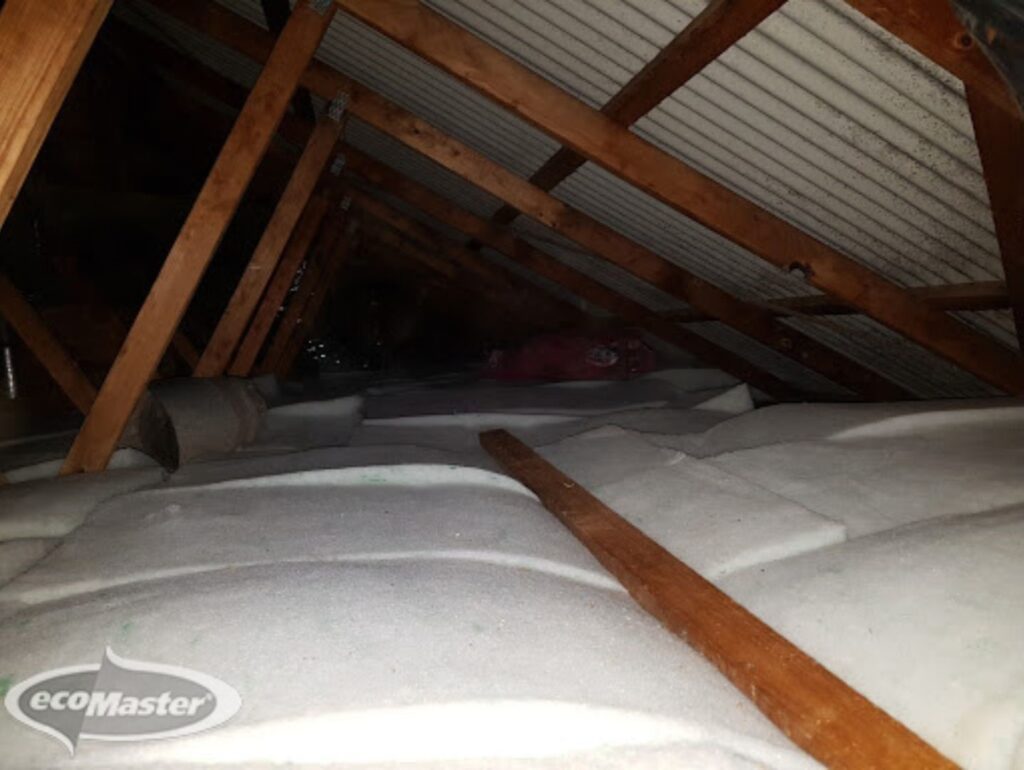
As much as 45% of the warm winter air in your home can escape through the ceiling. That’s why most Australian homes have ceiling insulation. Ceiling insulation helps to keep homes warm in winter and cool in summer by reducing heat transfer through the roof.
It may shock you to find out that in many cases the ceiling insulation in your roof has not been installed correctly. If the insulation in your roof hasn’t been installed correctly then its effectiveness will be compromised and the heat will readily transfer through your ceiling. Even a few small gaps in your roof insulation are enough to heavily reduce its effectiveness.
It is important to inspect the insulation in a newly built home too. Often those who are installing insulation in new homes are not aware of how thoroughly insulation must be installed, or, they may simply have been under time pressure. By inspecting your insulation, you can ensure that your home is insulated to the standard specified by the Building Code of Australia (BCA). This will make sure that your insulation is saving you money and keeping you comfortable in your new home.
How do I know if my Insulation is doing its job?
There are a few different ways to assess your roof insulation.
- For a home that is under construction, contact a local home inspector and ask for an inspection. They will be able to identify any gaps or inefficiencies in the insulation and let you know what needs to be done to correct the problem. Most often, it is the builder who will hire an inspector. It is the builder’s responsibility to insulate a new home to the BCA standards at risk of prosecution. Many new home owners invest in Independent Building Inspectors reviewing their home to make sure everything is up to standard.
- For an existing home, you can speak to an Energy Assessor. Energy Assessors are extremely knowledgeable in thermal efficiency and will be able to do an in depth analysis of your home’s energy efficiency, including the roof insulation. An Energy Assessor is ideal for an older home as they know how the effectiveness of insulation changes with age.
- Do it Yourself. Use an infrared (IR) camera to identify potential sources of leaks or poor insulation. Many libraries now have IR Cameras available to rent to help you find where your roof insulation is lacking. If an IR camera is not available, you can inspect the ceiling space physically. Look for any gaps or pockets in the insulation to make sure that your entire roof is covered with insulation.
- You can also take measurements of your ceiling’s R-Value to make sure that it meets the recommended standards for your climate zone. To learn more about what R-Value you need in your roof check out this blog on WHAT R-VALUE INSULATION IS IN MY ROOF.
Live in comfort
Correctly installed roof insulation provides numerous benefits. Including improved energy efficiency, increased comfort, reduced heating and cooling costs, and protection for the home from extreme temperature changes. If you have found that your roof insulation is lacking, check out this blog on HOW TO RETROFIT CEILING INSULATION BATTS IN MY ROOF for all the best tips and tricks.
People Also Ask:
⇒ Where can I learn more about this from an industry expert?
ecoMaster has been working in the energy efficiency / retrofit arena for over 20 years. During that time we learnt an enormous amount about diagnosing issues, distinctions on various products as well as developing the best installation practices. We have done the research, so you don’t have to. All that information has now been condensed into a series of ecoMasterClasses. Click here to gain access.
⇒ Can roof Insulation get wet?
There are two common sources of moisture for ceiling insulation. The first is condensation that can occur on the underside of the roof cladding. If your roof has been laid with sarking or a builder’s blanket under it, then the condensation should run harmlessly into the guttering. Otherwise, condensation can drip onto the insulation making it damp.
The other more serious source is a roof leak. If your insulation is wet you will see that there is water damage on the ceiling below and if left untreated you may find a mould problem develops as well.
Wet insulation ceases to be insulation. It becomes an effective conductor of heat. So apart from being bad for your home and those that live inside, it’s also bad for the insulation value of your ceiling.
You will need to find the source of the excessive water, repair it and then, if your insulation is not polyester batts you will need to also replace the affected insulation. If you have used polyester batts, as soon as they are dry they will be as good as new.
⇒ Where to Install roof insulation?
Roof insulation is best to be installed above all internal areas of your home.
This is because roof insulation is most effective when it covers an area that has the walls around it fully insulated. Most Australian homes have their external walls insulated, either insulated with a still air gap or bulk insulation.
However, there are other ways of insulating your home in segments. If your internal walls are insulated too, then you can do the cocooning method. Cocooning is installing ceiling insulation in critical rooms of your home where you need to have the temperature controlled. Common areas for cocooning are:
- Kids/Babies rooms
- Bathrooms
- Lounge Rooms
What’s Next?
We hope this article has helped you learn how to use simple ways to save on your utility bill. This in turn will help you on your energy and thermal efficiency retrofit journey to make your home more comfortable all year round, and reduce your costs and carbon emissions.
Next, explore Where is Insulation Used in a House.
If you found this article helpful, then please subscribe to our YouTube Channel. You’ll find many more helpful “How To” videos there. You can also follow us on Facebook and Instagram to stay in the loop. For more great information on how to make your home more energy and thermally efficient subscribe NOW to ecoBites. ecoBites are free bite size chunks of the latest energy efficiency information making it quick and easy for you to absorb.

Make sure your Roof Insulation
is working effectively now!


Recent Comments